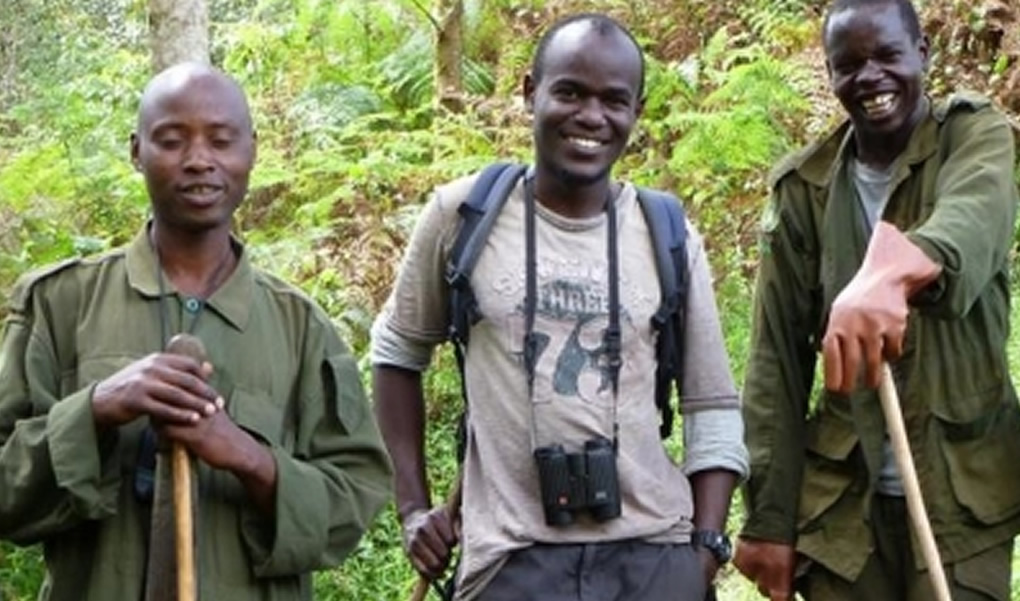Once a mountain gorilla senses the presence of people, he flees further into the forest. This is a highly meaningful behavior, especially given the continuing depletion of the gorillas’ natural environment by hunting, poaching and the prevalent resentment of the local communities against the animals. Since the introduction of ecologically aware tourism has many approaches in helping the protection of wild mountain gorillas and brings sustainable financial support for people in the very poor regions around the rain forests in southwestern Uganda with them, the habituation of wild mountain gorillas is one of the largest goals.
This approach – called habituation – cannot be accomplished in a short time. It requires an extensive knowledge of mountain gorillas, experts in the field, and a lot of patience.
Peter Kabano, a mountain gorilla researcher, brings these skills to the field and is therefore well-suited for this task.
The habituation of group mountain gorillas requires the consistent contact with the great apes within the forest. Every day, Peter travels to the mountain gorilla habitats in Bwindi with several rangers. They track the gorillas, sit down with them and follows them as they try to flee from the rangers and him. This first phase of the process has long hikes through the woods, through deep valleys, and over high hills to follow. Permanently, the mountain gorillas are confronted with a human face, Peter does not give them peace until one day the gorillas reach the point where they change their behavior: they attack.
The constant interference with the humans and them following the gorillas through the rain forest is too much, the mountain gorillas change their minds and attack their pursuers with feints and loud cries. If it comes in the process of these attacks to physical attacks, then the rangers can give Peter a helping hand, preventing injuries on both sides.
Finally, in the last step of mountain gorilla habituation, the animals accept the presence of the people: they no longer get bothered by the humans’ presence and keep doing their daily business. Getting to this point often takes several months and sometimes years – depending on how responsive the group’s leading male silverback is to the people. Even if a gorilla group is used to the presence of this group of rangers now, mountain gorilla trekking for this group is still far from now. This is because the gorillas accept the people known to them, but strangers still cause anxiety. In small groups including about two or three other visitors, they are faced with changing faces that keep coming up with the rangers in the forest. Only when the gorillas have also accepted this condition they are ready for the larger groups of visitors. Up to eight tourists are allowed to visit any habituated mountain gorilla group in Bwindi Impenetrable Rain Forest and Mgahinga Gorilla National Park in one day.


